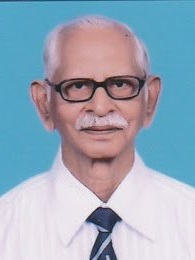Padmanabha Gautam was born in Madras on 23 Jul 1933. He joined the IAF on 01 Apr 1953 and went on to write a glorious story of courage and bravery to become one of the most highly decorated war heroes of our Nation. For his bravery in the face of danger, he was awarded the Vayu Sena Medal (Gallantry), Maha Vir Chakra and Bar to Maha Vir Chakra. This pilot flew the Canberra aircraft with extraordinary skill in all the 3 wars one of which was in Africa in support of UN Forces during air operations against Katanga. He flew daring missions many of them at night braving intense enemy fire and destroying numerous Pakistani targets during both 1965 & 1971 Wars. Unfortunately, soon after the 1971 war, this brilliant officer died in an air crash on 25 Nov 72, an untimely end to a glorious career. Our Nation is proud of this great son who displayed exceptional courage in the face of the enemy, determination, devotion to duty and extraordinary leadership. “Gautam Hall” commemorates this great son of Madras. Jal Vayu Vihar pays homage to this warrior who gave his today for our tomorrow – Air Marshal S Varthaman (retd)

I would like to share a remarkable and poignant story about the late Wg Cdr. Padmanabha Gautam, an esteemed pilot in the Indian Air Force. This personal account sheds light on his extraordinary courage and the tragic events that unfolded on that fateful day, November 25, 1972.
Wg Cdr. Padmanabha Gautam was my Officer in Charge (O I/C) of flying at Air Force Station, Pune in 1972. As his Senior Air Traffic Control Officer (SATCO), I had the privilege of working closely with him. At the time, he was transitioning from flying the Canberra aircraft to the MIG-21.
On that eventful morning, around 8:00 am, Wg Cdr. Gautam called me to inquire about my completion of the annual physical fitness test. When I informed him that I hadn’t done it yet, he suggested that we go together. He requested me to schedule an appointment with the Station Ground Training Instructor (GTI) in the Sports Section. I confirmed our appointment with the GTI a few days later.
Around 8:30 am, Wg Cdr. Gautam was taxiing his MIG aircraft, preparing for takeoff. It was his eighth training sortie after his conversion to the MIG-21. He took slightly longer than usual to conduct his preflight checks, which I attributed to his recent transition to the new aircraft. Eventually, he smoothly took off, seemingly ready for the training flight.

Meanwhile, from the Pune ATC Tower, a small aircraft owned by a surgeon civil Pilot who frequently flew between Pune and Bombay took off. The doctor flew for a while and made an unusually long transmission of over a minute to the Bombay tower, providing detailed flight information.
As if waiting for the doctor to complete his transmission, Wg Cdr. Gautam calmly radioed the Pune Tower, using his call sign, “One Four,” and declared, “Engine Failed.”
Surprised, I asked him, “Ejecting?” Despite being at a high altitude over the Pune Airfield, he responded in a composed manner, “Belly landing.”
His decision left me utterly shocked. It was unprecedented for a fighter aircraft, especially a MIG, to attempt a belly landing. Typically, only transport aircraft and Canberras performed such landings. The Station Commander, Air Commodore Dilbagh Singh, who later became the Air Chief, was listening to our radio conversation from his own aircraft as he was preparing for takeoff, converting himself to fly the Canberra.
At that moment, I assumed that Wg Cdr. Gautam mentioned belly landing for ejecting There was a vast harvested field behind the runway. While these thoughts raced through my mind, I suddenly caught sight of his MIG descending behind the runway, heading towards the field. Although everyone breathed a sigh of relief, an unexplainable silence fell upon us as we watched the aircraft continue to roll on the field. Unfortunately, a ball of fire engulfed the MIG as it struck a wall of boulders. We could see Wg Cdr. Gautam outside the aircraft, surrounded by flames.
Wg Cdr. Gautam was an exceptional pilot, and his exceptional flying skills allowed him to safely land the disabled aircraft on the field. His heroic act, landing a dead MIG, created history and showcased his bravery. As an eyewitness to the incident, I can attest, without hesitation, that he landed the aircraft intact and rolled for a considerable distance. He truly deserved credit for successfully executing this feat unparallel in the history of flying single-engine jet fighters.
However, fate was unkind to Wg Cdr. Gautam. Despite his heroic landing, tragedy befell him as his aircraft was consumed by fire. His heroism seemed to be baptized in flames. He was known for his calm and composed demeanor, and he was a teetotaler.
Alongside his loving wife, it was a heartwarming sight to see them take an evening walk together, regardless of the weather. He would only embark on night flights after their evening stroll. Since that ill-fated day, November 25, 1972, the world has been deprived of the presence of this beautiful couple.
Wg Cdr. Padmanabha Gautam remains an everlasting role model and inspiration to me. I am proud to have had the opportunity to work under such a remarkable and gentle pilot.
For me, Wg Cdr. Gautam will forever be an icon and an idol.

Wg Cdr K Parthasarthy , 6175 (ADM), served in the IAF between 1961 and 1983. He was the SATCO on duty at the time of this tragic event.